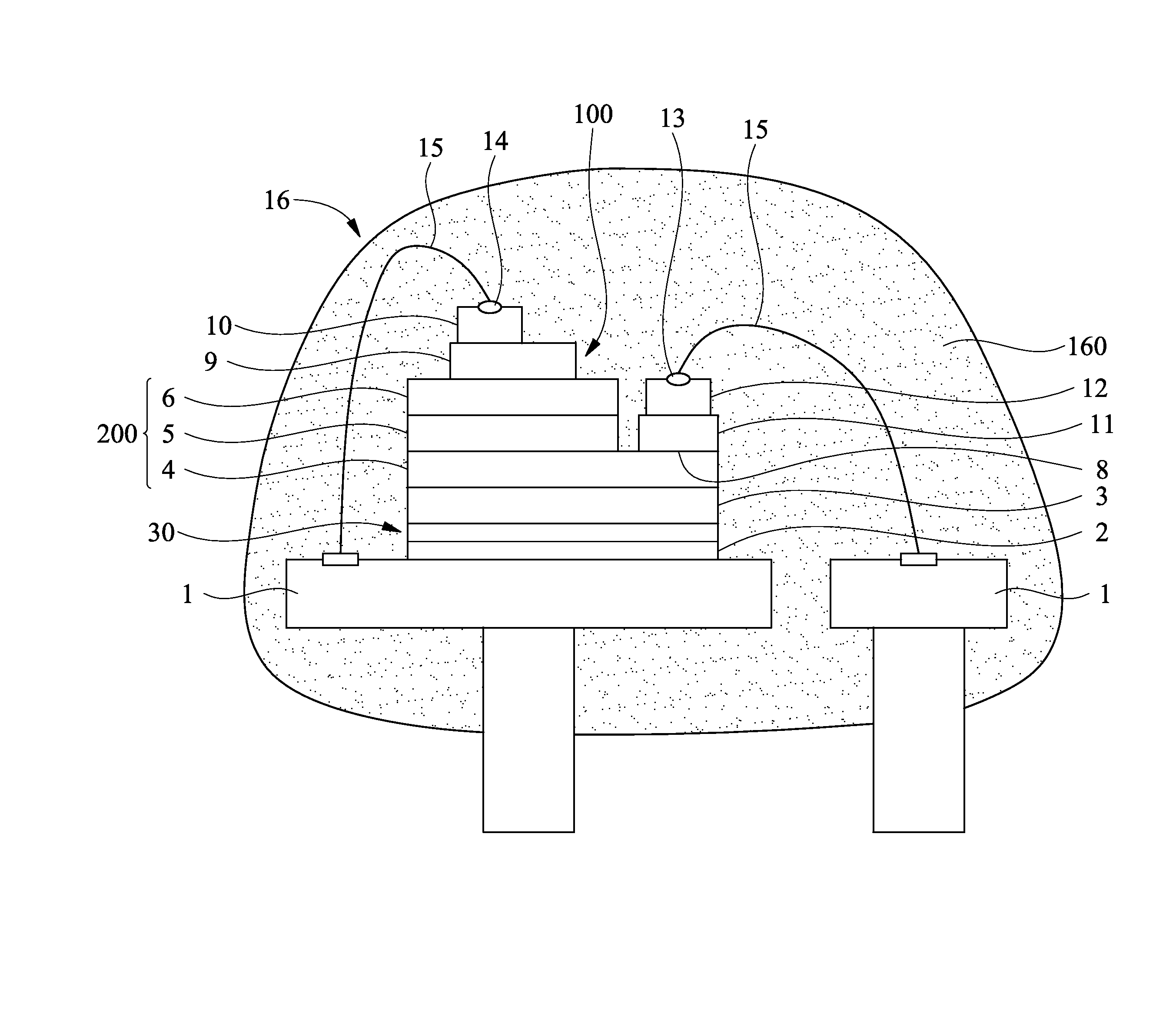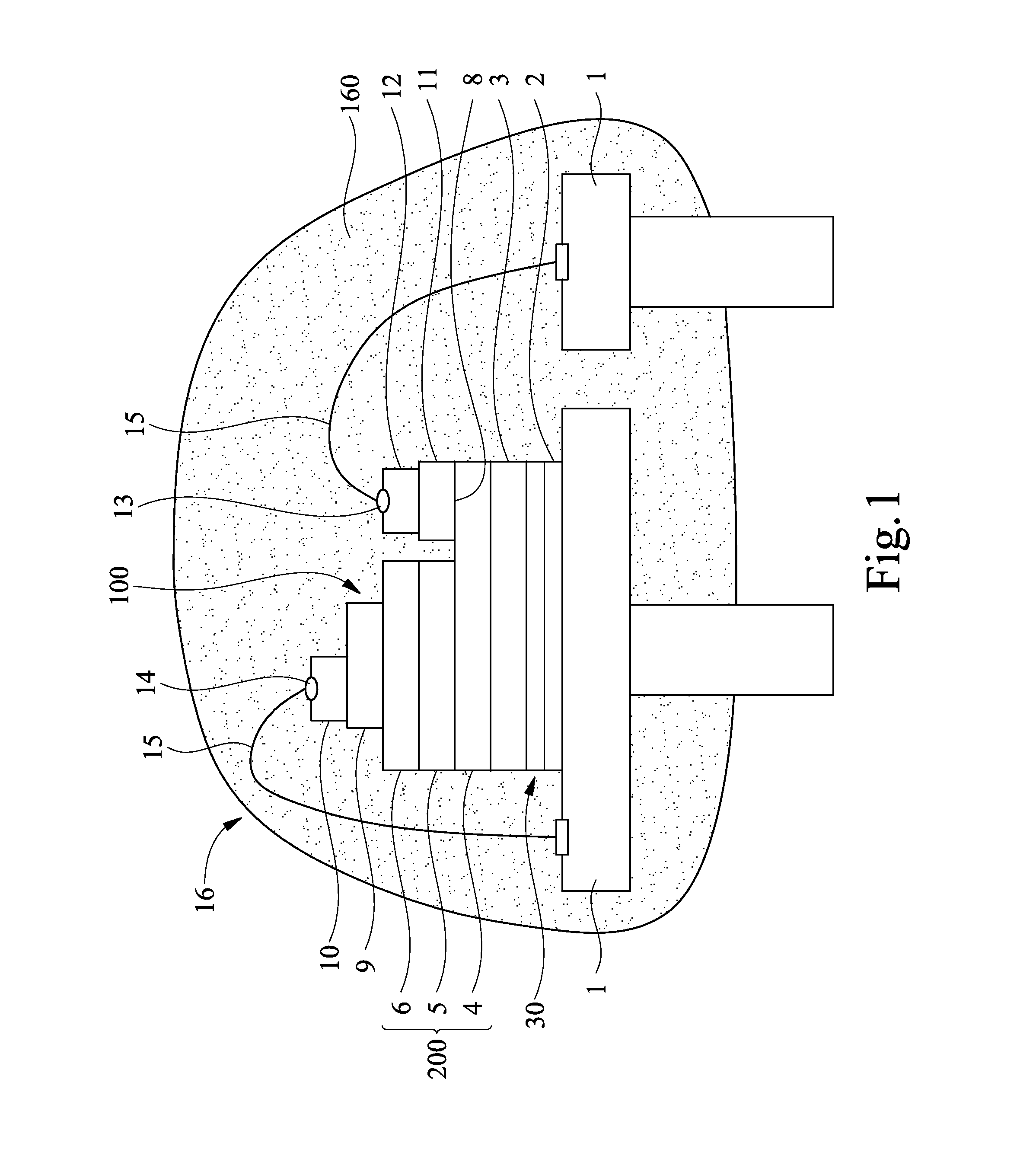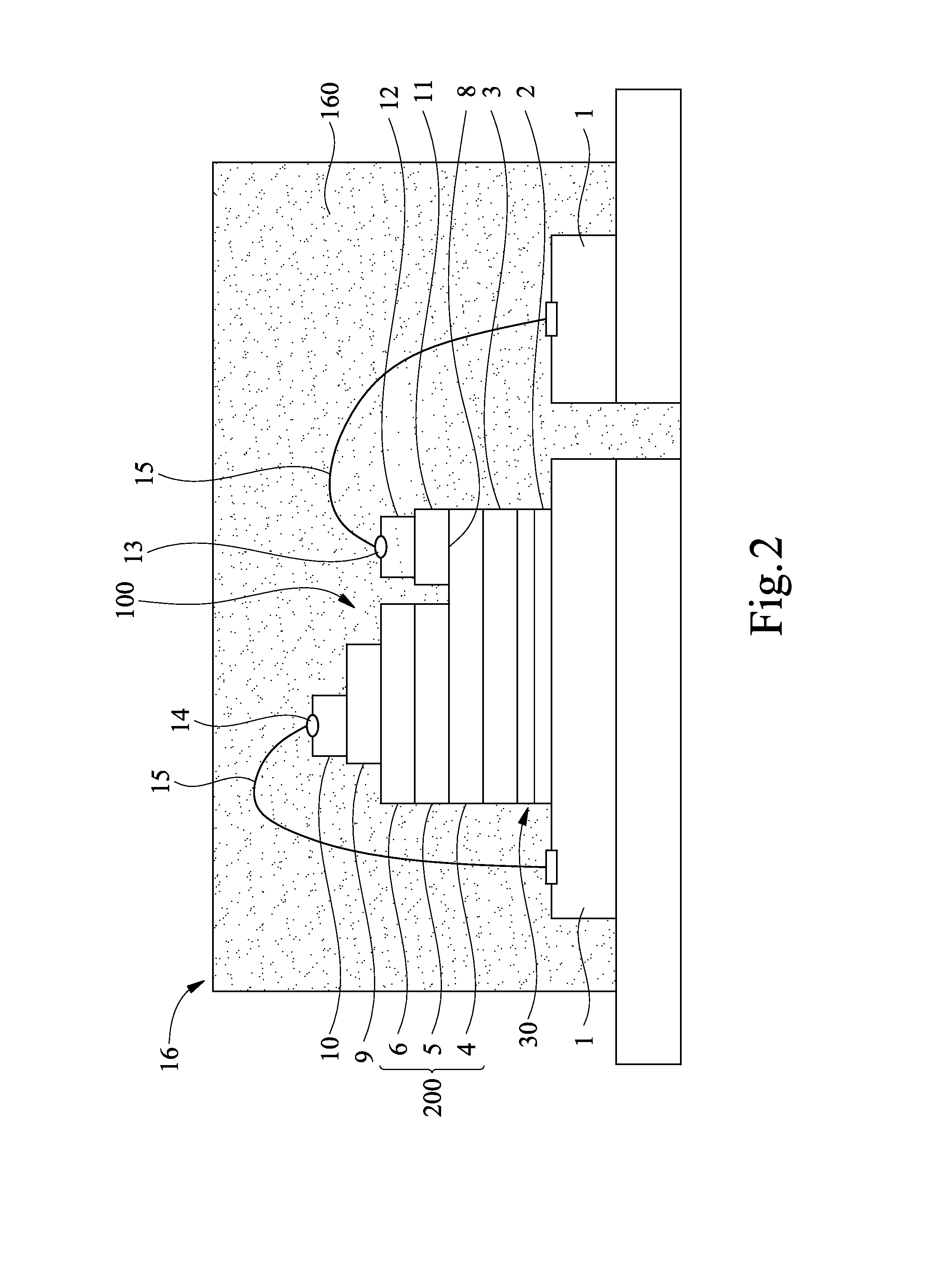Light-emitting Device Capable of Producing White Light And Light Mixing Method For Producing White Light With Same
- Summary
- Abstract
- Description
- Claims
- Application Information
AI Technical Summary
Benefits of technology
Problems solved by technology
Method used
Image
Examples
Embodiment Construction
[0057]The present invention will now be described with some preferred embodiments thereof. For the purpose of easy to understand, elements that are the same in the preferred embodiments are denoted by the same reference numerals. It is understood the accompanying drawings are illustrated only for assisting in describing the present invention and are not necessarily in compliance with the exact or precise size proportion and part arrangement of a real product manufactured through implementing the present invention. Therefore, the size proportion and part arrangement shown in the accompanying drawings are not intended to limit the present invention, which is intended to be limited only by the appended claims.
[0058]Please refer to FIGS. 1 and 2 that are structural views of a first and a second embodiment, respectively, of the light-emitting device capable of producing white light according to the present invention, which will also be briefly referred to as “white light-emitting device”...
PUM
 Login to View More
Login to View More Abstract
Description
Claims
Application Information
 Login to View More
Login to View More - R&D
- Intellectual Property
- Life Sciences
- Materials
- Tech Scout
- Unparalleled Data Quality
- Higher Quality Content
- 60% Fewer Hallucinations
Browse by: Latest US Patents, China's latest patents, Technical Efficacy Thesaurus, Application Domain, Technology Topic, Popular Technical Reports.
© 2025 PatSnap. All rights reserved.Legal|Privacy policy|Modern Slavery Act Transparency Statement|Sitemap|About US| Contact US: help@patsnap.com



